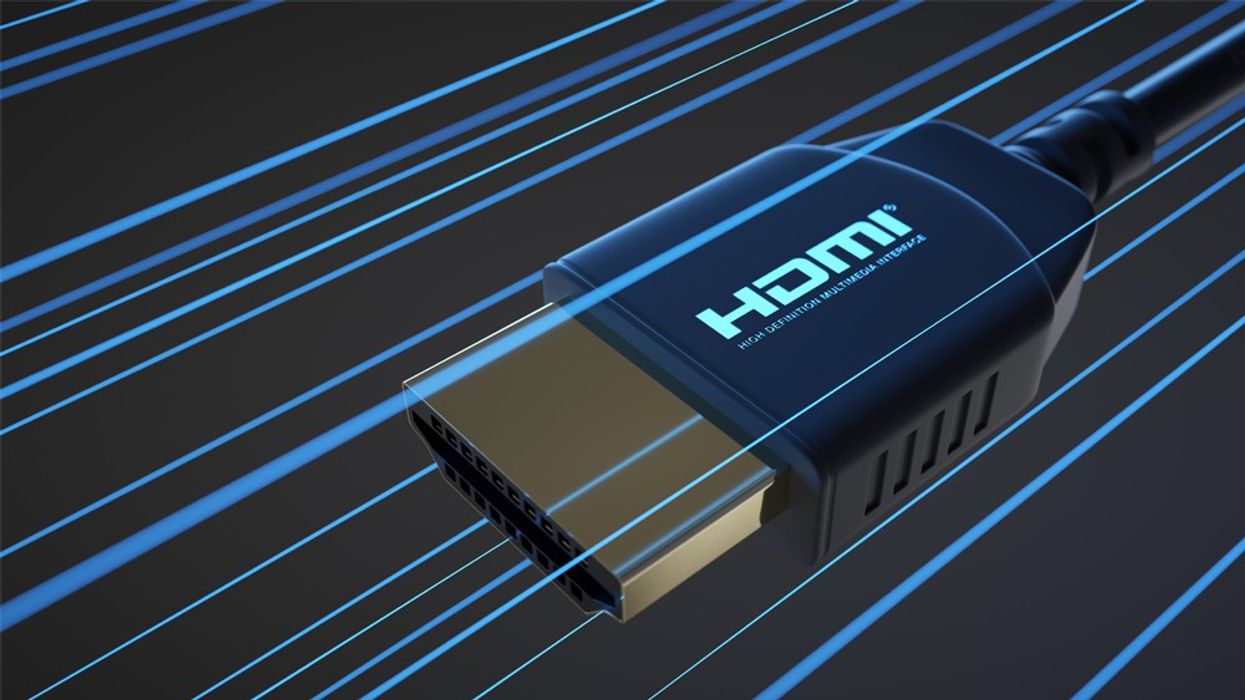HDMI 2.1 Is Here and the Future Is Now… Almost
HDMI 2.1 is becoming readily available on TVs, but do filmmakers need to worry about it now?

We’ve been hearing about the coming of HDMI 2.1 for years now. But while the new standard provides greater bandwidth for transmitting larger resolution images, is it something that creators should be adopting sooner, rather than later? Well, not right away, but it's something worth knowing about.
HDMI 2.1 is the next big step as we continue the march towards a high-refresh-rate, 4K world, and while it’s not widespread yet, now is the time to get familiar with the new features that this new dot upgrade brings.
Currently, HDMI 2.0 supports up to 18Gbps bandwidth and 10-bit 8K video resolutions to 60fps. So your external records and monitors are in plenty good shape for a while. What HDMI 2.1 brings is 48GBps bandwidth and offers 10K frame rates up to 120fps. This increased frame rate will also be translated downward to lower resolutions like 4K 120p, 5K 120p, and 8K 120p.
The good news is that standard HDMI 2.1 is backward compatible, and HDMI 2.0 cables will also work under the new spec, but only with the lower resolutions and frame rates that it can support. This means that equipment that supports up to 8K 30fps will be fine.
Color schemes like BT2020 can also be enjoyed with current HDMI 2.0 cables if they are 2.0a/b compatible, but the higher-end features, including frame rates over 8K 30p and HDR, won’t be able to be accessed with them.
HDMI 2.1 also supports the next HDR spec, known as Dynamic HDR (or Advanced HDR). While current HDR standards can be applied to a project on the whole, dynamic HDR can be adjusted at the frame level. The result is a greater dynamic range and a vibrant color gamut that can be maximized not only from scene to scene but from frame to frame. It’s a colorist’s dream.
Proprietary formats like Dolby Vision can already do this, but for more open-source options like HDR10, dynamic HDR will be the path moving forward without those pesky licensing fees.
Then there’s an enhanced audio return channel, or eARC. HDMI 2.1 will enable advanced sound systems like Dolby Atmos to be enjoyed at the highest possible resolution, thanks to plenty of bandwidth.
For content creators, it’s just a matter of being aware of what’s coming. As things stand now, the only consumers who can take advantage of HDMI 2.1 are gamers who are looking for those faster refresh rates.
For now, unless you’re one of those bleeding edge creators who love to experiment with higher and higher frame rates and resolution that will only be seen in a booth on a show floor, HDMI 2.1 offers only the advantage of future-proofing your next equipment purchase. It’s not going to help you now, but it will down the road.














